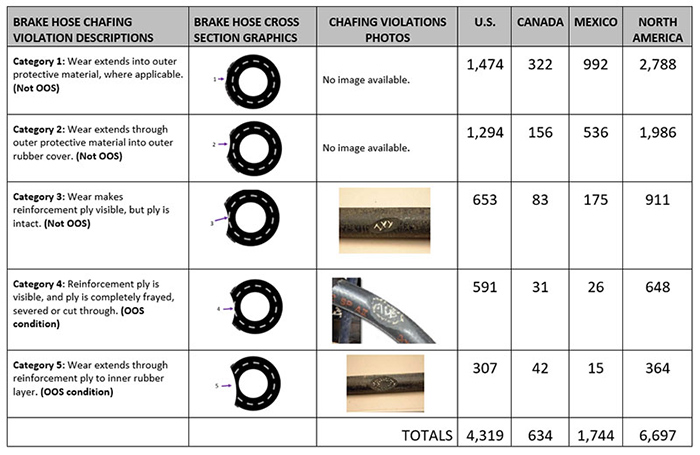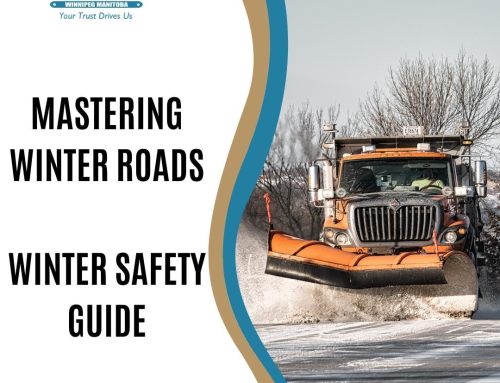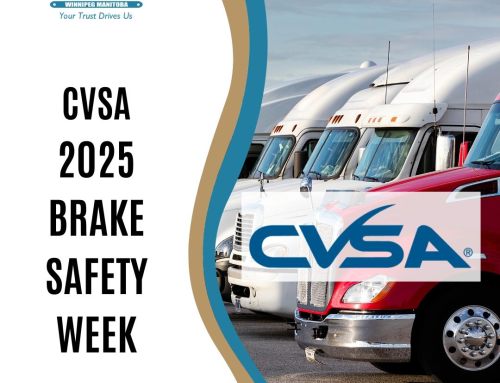 The Commercial Vehicle Safety Alliance (CVSA) has announced dates for several truck inspection campaigns set to take place in 2021. While some of these are later in the year, you’ll want to keep them in mind.
The Commercial Vehicle Safety Alliance (CVSA) has announced dates for several truck inspection campaigns set to take place in 2021. While some of these are later in the year, you’ll want to keep them in mind.
International Roadcheck – May 4 to 6, 2021
International Roadcheck is an annual three-day event when CVSA-certified inspectors conduct compliance, enforcement and educational initiatives targeted at various elements of motor carrier, vehicle and driver safety. International Roadcheck is the largest targeted enforcement program on commercial motor vehicles in the world, with nearly 15 trucks or buses inspected, on average, every minute across North America during a 72-hour period.
Each year, CVSA asks its member jurisdictions to capture and report data focusing on a certain category of violations during International Roadcheck. This helps bring awareness to certain aspects of a roadside inspection. This year, inspectors will capture data on two categories, corresponding to the two main inspection categories of the North American Standard Level I Inspection – driver operating requirements and vehicle mechanical fitness. For the driver category, hours of service will be highlighted this year, and for the vehicle category, inspectors will be paying special attention to lighting.
Results from 2020
In 2020, 26,451 Level I Inspections, 11,224 Level II Inspections, 11,364 Level III Inspections and 1,112 Level V Inspections were conducted. In total, 50,151 inspections were conducted throughout Canada, Mexico and the U.S.
The total number of out-of-service vehicle violations from Canada, Mexico, and the U.S. combined was 12,254, with the top five vehicles out of service (OOS) violations being:
- Brake System – Number of OOS violations 3,163 (25.8%).
- Tires – Number of OOS violations 2,326 (19.0%)
- Lights – Number of OOS violations 1,650 (13.5%)
- Cargo Securement – Number of OOS violations 1,586 (12.9%)
- Brake Adjustment – Number of OOS violations 1,567 (12.8%)
The 2020 focus was on the driver requirements category of a roadside inspection. A driver may be placed out of service for violations related to the driver’s age; commercial driver’s license or operator’s/chauffeur’s license or permit; medical/physical requirements; record of duty status; sickness or fatigue; or intoxicating beverages, drugs and other substances.
Overall, the top driver out-of-service violation category during 2020 International Roadcheck was for hours of service, accounting for 34.7% of all out-of-service driver violations. The total number of out-of-service driver violations was 3,247.
The top five drivers OOS violations for driver requirements were:
- Hours of Service – Number of OOS violations 1,128 (34.7%)
- Other (moving violations, cell phone use, etc.) – Number of OOS violations 709 (21.8%)
- Wrong Class License – Number of OOS violations 687 (21.2%)
- False Logs – Number of OOS violations 455 (14.0%)
- Suspended License – Number of OOS violations 141 (4.3%)
Operation Safe Driver Week – July 11 to 17, 2021
Operation Safe Driver holds activities across the United States, Canada and Mexico to increase commercial vehicle and non-commercial vehicle traffic enforcement, safety belt enforcement, and driver roadside inspections; improve driver regulatory compliance; implement commercial driver educational and awareness programs to the motor carrier population; educate youth about safely sharing the roads with large trucks and buses; increase awareness to the general motoring public about safe operations around commercial motor vehicles.
This year’s Operation Safe Driver Week will take place July 11-17, with an emphasis on speeding. CVSA selected speeding as its focus this year because despite a drop in roadway travel last year due to the pandemic, nationally, traffic fatalities increased. According to the National Safety Council’s (NSC) preliminary estimates, the estimated rate of death on roads last year increased 24% over the previous 12-month period, despite miles driven dropping 13%. The increase in the rate of death is the highest estimated year-over-year jump NSC has calculated in 96 years.
In addition to speeding, law enforcement personnel will be tracking other dangerous driver behaviours throughout Operation Safe Driver Week, such as reckless or aggressive driving, distracted driving, following too closely, improper lane change, failure to obey traffic control devices, failure to use a seat belt, evidence of drunk or drugged driving, etc.
Results from 2020
Enforcement officials interacted with 29,921 commercial motor vehicle drivers during 2020’s Operation Safe Driver Week. Commercial motor drivers received a total of 10,736 traffic enforcement warnings and citations. Broken out, that’s 6,077 warnings and 4,659 citations.
The top five traffic enforcement citations given to commercial motor vehicle drivers were:
- Speeding/violation of basic speed law/driving too fast for the conditions – 2,339 (50.20%)
- Failure to use seat belt while operating commercial motor vehicle – 1,003 (21.53%)
- Failure to obey traffic control device – 617
- Using a hand-held phone/texting – 269 (4.35%)
- Improper lane change – 122
Brake Safety Week – August 22 to 28, 2021
During the Brake Safety Week, commercial motor vehicle inspectors conduct brake system inspections (primarily Level IV Inspections) on large trucks and buses throughout North America to identify brake-system violations.
Properly functioning brake systems are crucial to safe commercial motor vehicle operation. Commercial motor vehicle brakes are designed to hold up under tough conditions; however, they must be inspected and maintained carefully and consistently, so they operate and perform properly throughout the vehicle’s life.
Brake-related violations comprise the largest percentage of all out-of-service violations cited during roadside inspections. Improperly installed or poorly maintained brake systems can reduce the braking capacity and stopping distance of trucks and buses, which poses a serious risk to the driver and public safety.
Results from 2020
In 2020’s Brake Safety Week, 12% of the 43,565 commercial motor vehicles inspected were placed out of service for brake-related violations. Inspectors from Canada, Mexico and the U.S. removed 5,156 commercial motor vehicles from roadways due to brake violations during the week-long inspection and enforcement event, focused specifically on reducing brake-related crashes by conducting inspections and identifying and removing unsafe commercial motor vehicles from roadways.
In the U.S., 35,778 inspections were conducted; 4,565 vehicles (13%) were placed out of service for brake-related violations. In Mexico, 6% (355) of the 5,958 commercial motor vehicles inspected were placed out of service for brake-related violations. In Canada, 1,829 inspections were conducted, and the brake-related out-of-service rate was 14% (256).
88% of the commercial motor vehicles inspected did not have brake-related critical vehicle inspection item violations. In addition to capturing brake system out-of-service violation data, during the 2020 Brake Safety Week, inspectors also recorded and submitted data regarding the chafing of brake hoses. Inspectors reported levels of brake hose chafing violations, separated into five categories based on the level of severity; two of which were out-of-service conditions, three were not.
A total of 6,697 hose chafing violations were reported in a separate data query from participating jurisdictions.
Below, you’ll see a graphic indicating reported brake hose chafing violations by severity.

This graphic shows the percentage of total brake hose chafing violation.

An Unannounced One-day Brake Safety Enforcement Initiative
This blitz could happen at any time during 2021. Much like Brake Safety Week, during this one-day effort, CMV inspectors will conduct brake system inspections (primarily Level IV Inspections) on large trucks and buses throughout North America to identify out-of-adjustment brakes and brake-system violations.




